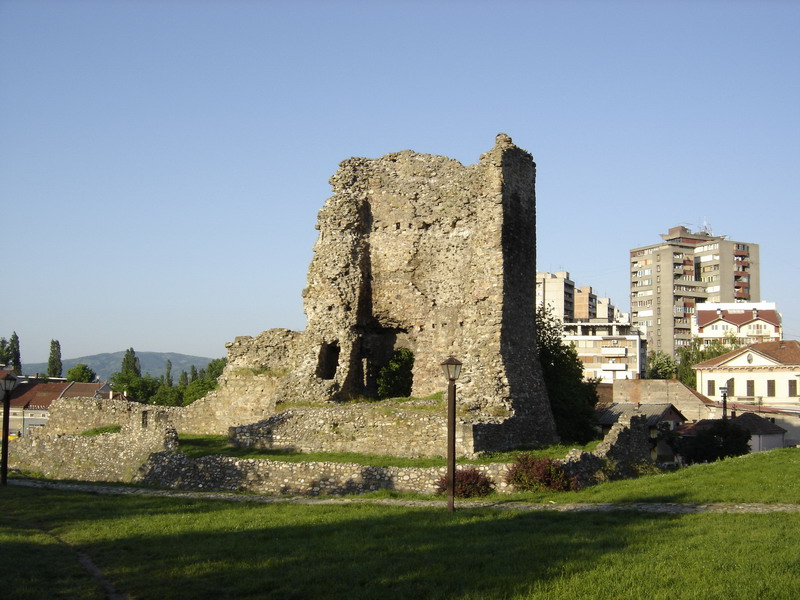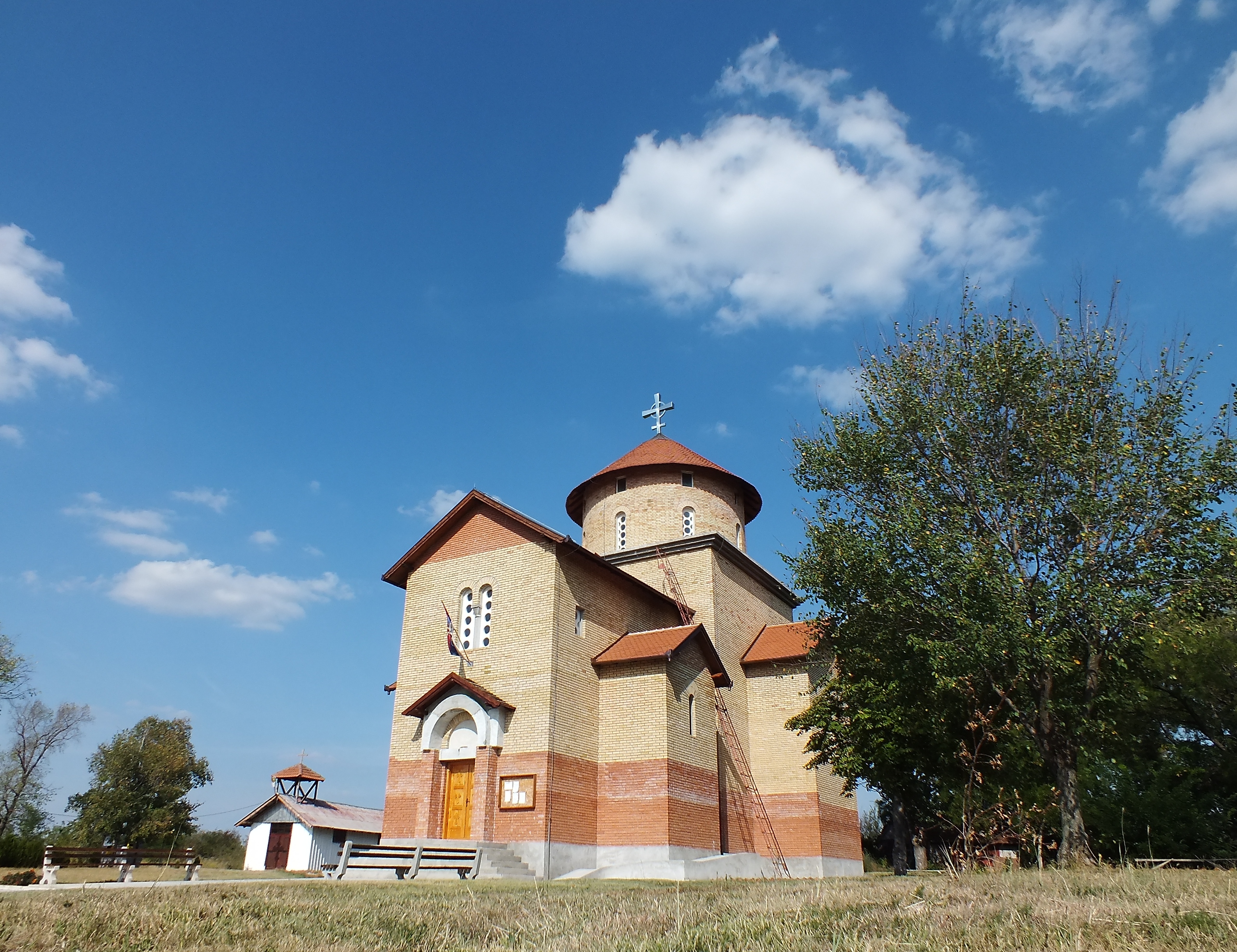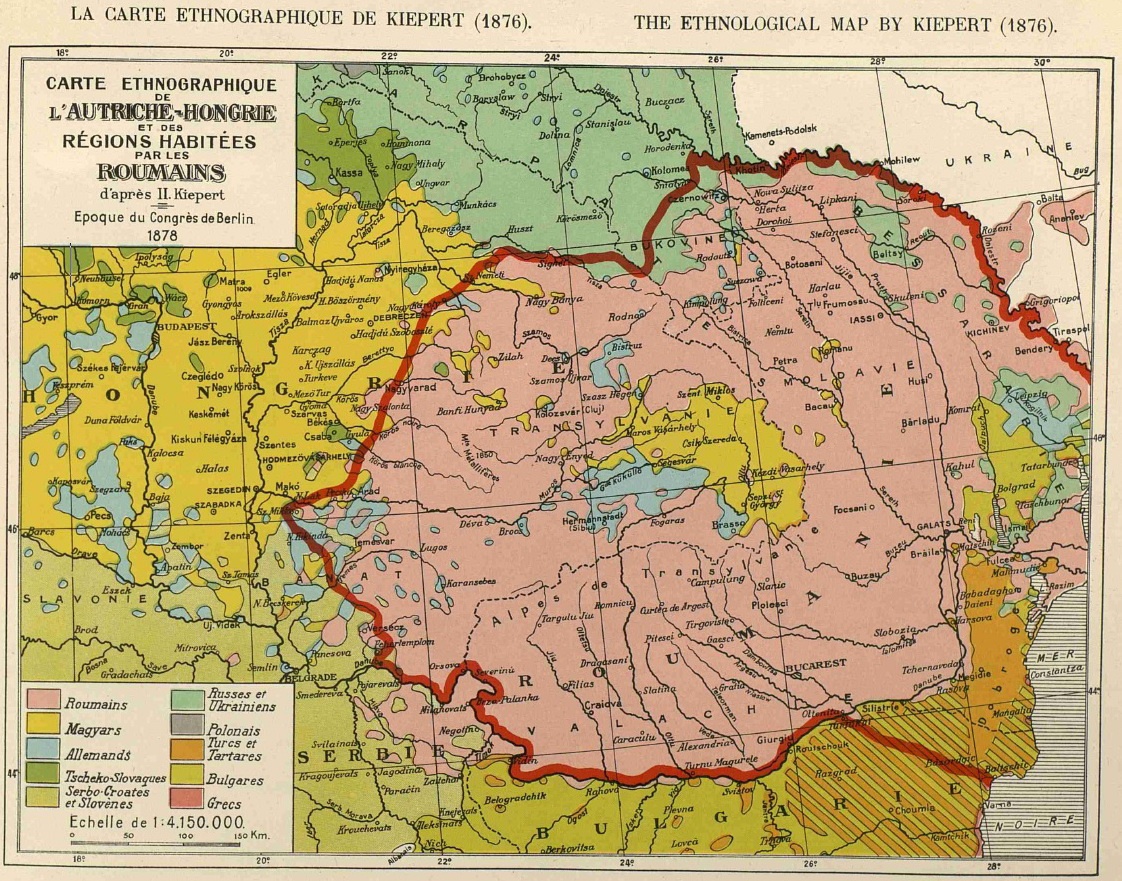|
Despotovac
Despotovac ( sr-cyr, Деспотовац) is a town and municipality located in the Pomoravlje District of central Serbia. It is 130 kilometers southeast of Belgrade. Its name stems from Despot, a title of Serbian medieval prince Stefan Lazarević. As of 2011 census, the town has a total population of 4,212, while the municipality has a population of 22,995. History The Serb Orthodox monastery of Manasija was built between 1406-1418 and is one of the most significant monuments of Serbian culture, belonging to the "Resava school" ( Serbian architecture) From 1929 to 1941, Despotovac was part of the Morava Banovina of the Kingdom of Yugoslavia. Demographics As of 2011 census results, the municipality has 22,995 inhabitants. Ethnic groups The ethnic composition of the municipality: Settlements Aside from the town of Despotovac, the municipality includes the following settlements: * Balajnac * Beljajka * Bogava * Brestovo * Bukovac * Despotovac (town) * Despotovac * D ... [...More Info...] [...Related Items...] OR: [Wikipedia] [Google] [Baidu] |
Manasija
The Manasija Monastery ( sr, Манастир Манасија, Manastir Manasija, ) also known as Resava (Ресава, ), is a Serbian Orthodox monastery near Despotovac, Serbia founded by '' Despot'' Stefan Lazarević between 1406 and 1418. The church is dedicated to the Holy Trinity. It is one of the most significant monuments of medieval Serbian culture and it belongs to the " Morava school". The monastery is surrounded by massive walls and towers. Immediately following its foundation, the monastery became the cultural centre of the Serbian Despotate. Its School of Resava was well known for its manuscripts and translations throughout the 15th and 16th centuries, even after the fall of the Despotate to the Ottoman Turks. Manasija complex was declared Monument of Culture of Exceptional Importance in 1979, and it is protected by Republic of Serbia, and monastery have entered a UNESCO Tentative List Process in 2010. Architecture and history The founding charter of the mona ... [...More Info...] [...Related Items...] OR: [Wikipedia] [Google] [Baidu] |
Municipalities And Cities Of Serbia
The municipalities and cities ( sr, општине и градови, opštine i gradovi) are the second level administrative subdivisions of Serbia. The country is divided into 145 municipalities ( sr-Latn, opštine, singular: ; 38 in Southern and Eastern Serbia, 42 in Šumadija and Western Serbia, 37 in Vojvodina and 28 in Kosovo and Metohija) and 29 cities (Serbian Latin: , singular: ; 9 in Southern and Eastern Serbia, 10 in Šumadija and Western Serbia, 8 in Vojvodina and one in Kosovo and Metohija), forming the basic level of local government. Municipalities and cities are the administrative units of Serbia, and they form 29 districts in groups, except the City of Belgrade which is not part of any district. A city may and may not be divided into city municipalities ( sr-Latn, gradske opštine, singular: ) depending on their size. Currently, there are six cities in Serbia with ''city municipalities'': Belgrade, Novi Sad, Niš, Požarevac, Užice and Vranje comprise s ... [...More Info...] [...Related Items...] OR: [Wikipedia] [Google] [Baidu] |
Stefan Lazarević
Stefan Lazarević ( sr-Cyrl, Стефан Лазаревић, 1377 – 19 July 1427), also known as Stefan the Tall ( sr, Стефан Високи / ''Stefan Visoki''), was the ruler of Serbia as prince (1389–1402) and despot (1402–1427), diplomat, legislator, ktetor, patron of the arts, poet and one of the founding members of the Order of the Dragon. The son of Prince Lazar Hrebeljanović, he was regarded as one of the finest knights and military leaders at that time. After the death of his father at Kosovo (1389), he became ruler of Moravian Serbia and ruled with his mother Milica (a Nemanjić), until he reached adulthood in 1393. Stefan led troops in several battles as an Ottoman vassal, until asserting independence after receiving the title of ''despot'' from the Byzantines in 1402. Becoming a Hungarian ally in 1403–04, he received large possessions, including the important Belgrade and Golubac Fortress. He also held the superior rank in the chivalric Order of ... [...More Info...] [...Related Items...] OR: [Wikipedia] [Google] [Baidu] |
Pomoravlje District
The Pomoravlje District ( sr, / , ) is one of eight administrative districts of Šumadija and Western Serbia. It expands to the central parts of Serbia. According to the 2011 census results, it has a population of 214,536 inhabitants. The administrative center is the city of Jagodina. Municipalities The Pomoravlje District contains 6 municipalities (singular: општина, ''opština'' - plural: oпштине, ''opštine''). The following table shows the names of each municipality in the Latin and Cyrillic, the main town (in bold) or village, and the population of each as of 2011: Demographics According to the last official census done in 2011, the Pomoravlje District has 214,536 inhabitants. 45.35% of the population lives in the urban areas. Ethnic groups Society and culture Culture The nineteenth century architecture has been partly preserved in the town. Earlier times are witnessed by the remnants of the edifices such as The House of Hajduk Veljko from the seve ... [...More Info...] [...Related Items...] OR: [Wikipedia] [Google] [Baidu] |
List Of Cities In Serbia
, plural: ) is elected through popular vote, elected by their citizens in local elections. Also, the presidents of the municipalities are often referred to as "mayors" in everyday usage. There are 29 cities (, singular: ), each having an assembly and budget of its own. As with a municipality, the territory of a city is composed of a city proper and surrounding villages (e.g. the territory of the City of Subotica is composed of the Subotica town and surrounding villages). The capital Belgrade is the only city on the level of a district. All other cities are on the municipality level and are part of a district. ;City municipalities The city may or may not be divided into ''city municipalities''. Five cities (Belgrade, Niš, Požarevac, Vranje and Užice) comprise several city municipalities. Competences of cities and city municipalities are divided. The city municipalities of these six cities also have their assemblies and other prerogatives. The largest city municipality by numbe ... [...More Info...] [...Related Items...] OR: [Wikipedia] [Google] [Baidu] |
Telephone Numbers In Serbia
Regulation of the telephone numbers in Serbia is under the responsibility of the Regulatory Agency of Electronic Communication and Mail Services (RATEL), independent from the government. The country calling code of Serbia is +381. The country has an open telephone numbering plan, with most numbers consisting of a 2- or 3-digit calling code and a 6-7 digits of customer number. Overview The country calling code of Serbia is +381. Serbia and Montenegro received the code of +381 following the breakup of the Socialist Federal Republic of Yugoslavia in 1992 (which had +38 as country code). Montenegro switched to +382 after its independence in 2006, so +381 is now used only by Serbia. An example for calling telephones in Belgrade, Serbia is as follows: *xxx xx xx (within Belgrade) *011 xxx xx xx (within Serbia) *+381 11 xxx xx xx (outside Serbia) The international call prefix depends on the country being called from: for example, 00 for most European countries and 011 from North Ame ... [...More Info...] [...Related Items...] OR: [Wikipedia] [Google] [Baidu] |
Districts Of Serbia
An ''okrug'' is one of the first-level administrative divisions of Serbia, corresponding to a "district" in many other countries (Serbia also has two autonomous provinces at a higher level than districts). The term ''okrug'' (pl. ''okruzi)'' literally means "encircling" and corresponds to in German language. It can be translated as "county", though it is generally rendered by the Serbian government as "district". The Serbian local government reforms of 1992, going into effect the following year, created 29 districts, with the City of Belgrade holding similar authority. Following the 2008 Kosovo declaration of independence, the districts created by the UNMIK-Administration were adopted by Kosovo. The Serbian government does not recognize these districts. The districts of Serbia are generally named after historical and geographical regions, though some, such as the Pčinja District and the Nišava District, are named after local rivers. Their areas and populations vary, rangi ... [...More Info...] [...Related Items...] OR: [Wikipedia] [Google] [Baidu] |
Despotes
Despot or ''despotes'' ( grc-gre, δεσπότης, despótēs, lord, master) was a senior Byzantine court title that was bestowed on the sons or sons-in-law of reigning emperors, and initially denoted the heir-apparent of the Byzantine emperor. From Byzantium it spread throughout the late medieval Balkans and was also granted in the states under Byzantine cultural influence, such as the Latin Empire, the Second Bulgarian Empire, the Serbian Empire and its successor states ( Bulgarian and sr, деспот, despót), and the Empire of Trebizond. With the political fragmentation of the period, the term gave rise to several principalities termed "despotates" which were ruled either as independent states or as appanages by princes bearing the title of despot; most notably the Despotate of Epirus, the Despotate of the Morea, the Despotate of Dobruja and the Serbian Despotate. In modern usage, the word has taken a different meaning: " despotism" is a form of government in which ... [...More Info...] [...Related Items...] OR: [Wikipedia] [Google] [Baidu] |
Vehicle Registration Plates Of Serbia
Vehicle registration plates of Serbia are issued using a two-letter region code, followed by three or four-digit numeric and a two-letter alpha license code, separated by a hyphen (e.g., BG 123-AA or BG 1234-AA). Overview The regional code and the license code are separated by the Serbian cross shield and a Cyrillic letter combination for the region below. A blue field is placed along the left side edge, as in European Union countries, bearing the ISO 3166-1 alpha-3 country code for Serbia (SRB). License numeric code contains combination of three digits (0-9), while two letter alpha code is made of combination of letters using Serbian Latin alphabet order, with addition of letters X, Y and W. The standard dimensions of a Serbian license plates are 520.5 × 112.9 mm. Issuance of current license plates started on 1 January 2011 and they were used alongside the old ones during the transitional period until the end of 2011. Regular license plates Following are the licens ... [...More Info...] [...Related Items...] OR: [Wikipedia] [Google] [Baidu] |
Romani People In Serbia
Romani people, or Roma ( sr, Роми, Romi), are the third largest ethnic group in Serbia, numbering 147,604 (2.1%) according to the 2011 census. However, due to a legacy of poor birth registration and some other factors, this official number is likely underestimated. Estimates that correct for undercounting suggest that Serbia is one of countries with the most significant populations of Roma people in Europe at 250,000-500,000. Anywhere between 46,000 to 97,000 Roma are internally displaced from Kosovo after 1999. Another name used for the community is ''Cigani'' ( sr-Cyrl, Цигани). They are divided into numerous subgroups, with different, although related, Romani dialects and history. Subgroups Main sub-groups include "Turkish Gypsies" (''Turski Cigani''), "White Gypsies" (''Beli Cigani''), "Wallachian Gypsies" (''Vlaški Cigani'') and "Hungarian Gypsies" (''Mađarski Cigani''), as studied by scholar Tihomir Đorđević (1868–1944). * Wallachian Roma. Migrated fro ... [...More Info...] [...Related Items...] OR: [Wikipedia] [Google] [Baidu] |
Montenegrins Of Serbia
The Montenegrins of Serbia ( sr, Црногорци у Србији, Crnogorci u Srbiji) are a national minority in the country. According to the 2011 census, there are 38,527 citizens of recent Montenegrin descent, Montenegrin Serbs, or ethnic Montenegrins in Serbia. They are the sixth largest ethnic community in the Vojvodina province. Geography The largest concentration of Montenegrins in Vojvodina could be found in the municipalities of Vrbas (24.79%), Mali Iđoš (20.83%), and Kula (16.34%). Settlements in Vojvodina with an absolute or relative Montenegrin majority are: Lovćenac in the Mali Iđoš municipality with 56.86% Montenegrins, Kruščić in the Kula municipality with 32.64%, and Montenegrins in Savino Selo in the Vrbas municipality with 38.20% Montenegrins. Formerly, the village of Bačko Dobro Polje in the Vrbas municipality also had a Montenegrin majority (According to the 1971 census, Montenegrins comprised 55.39% of population of this village, while ... [...More Info...] [...Related Items...] OR: [Wikipedia] [Google] [Baidu] |
Romanians Of Serbia
Romanians ( ro, Românii din Serbia, sr, Румуни у Србији, Rumuni u Srbiji) are a recognised national minority in Serbia. The total number of self-declared Romanians according to the 2011 census was 29,332, while 35,330 people declared themselves Vlachs; there are differing views among some of the Vlachs over whether they should be regarded as Romanians or as members of a distinctive nationality. Declared Romanians are mostly concentrated in Banat, in Vojvodina, while declared Vlachs are mostly concentrated in the Timok Valley, in eastern Serbia. History As Daco-Romanian-speakers, the Vlachs have a connection to Roman heritage in Serbia. Following Roman withdrawal from the province of Dacia at the end of the 3rd century, the name of the Roman region was changed to Dacia Aureliana, and (later Dacia Ripensis) spread over most of what is now called Serbia and Bulgaria, and an undetermined number of Romanized Dacians ( Carpi) were settled there. Strong Roman prese ... [...More Info...] [...Related Items...] OR: [Wikipedia] [Google] [Baidu] |








